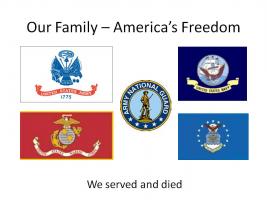
 |
|
|||||||
| Home | Forums | Gallery | Register | Video Directory | FAQ | Members List | Calendar | Games | Today's Posts | Search | Chat Room |
  |
|
|
Thread Tools | Display Modes |
|
#1
|
|||
|
|||
|
NAVAIR Connects With Army Special
Forces in Support of Operation Enduring Freedom By Renee Hatcher, NAVAIR Public Affairs PATUXENT RIVER, Md. (NNS) -- The Naval Air Systems Command (NAVAIR) F-14 Program Office (PMA-241) sent one of its own to the front lines of the war in Afghanistan last month to help improve the situational awareness of Army Green Berets on the ground. "The thrust of PMA-241 has always been to provide service to the fleet," said Capt. Peter Williams, F-14 program manager. "We have been the ultimate technology provider for the F-14 community, but when we can go beyond that and help our brethren in the Army, it's an exceptional thing." Kevin Morse, PMA-241's deputy assistant program manager for logistics, and two contractor support personnel spent about three weeks in Afghanistan establishing connectivity between Army Special Forces and Navy tactical aircraft for the exchange of imagery and intelligence. NAVAIR loaned the Army four Fast Tactical Imagery (FTI) laptops, a technology developed by PMA-241, that can retrieve and send information in near real-time. The need for such a capability was identified by an F-14 aviator from Carrier Air Group 7, who was on a one-month assignment with the intelligence center at the Army Air Base in Bagram. He saw that the Special Forces group in the Kabul area were not getting the imagery intelligence as quickly as they needed. He recognized the challenge and knew who could meet it. The original request for support came to PMA-241 May 20 and the program office had the Navy and Army exchanging images by June 22. "This is just one example of NAVAIR using its advanced warfighting capabilities to solve the problems of modern warfare," Williams said. "Working hand-in-hand with the Army against al Qaeda forces, PMA-241 demonstrated the value of this network centric warfare type of capability in a real-time theater of operations." Morse left for Afghanistan June 12. He located the equipment, made the necessary connections, and trained the Army Green Berets on how to use FTI laptops to communicate with Navy F-14 squadrons VF-143 and VF-11. "The special forces were not getting any near real-time imagery from tactical aircraft in the theater of operations," Morse said. "FTI enabled the F-14 crews to transmit images to the ground troops within two minutes." This is a two-way communication system that lets the ground troops send images back to the Tomcats. This capability is also compatible with the Army's AH-64 Apache helicopter and FTI is expected to be used on the /A-18E/F Super Hornet. "The Tomcat is mature but it's still leading the way with new technology, and it's setting the stage for the Super Hornet," Williams said. "We are helping to establish requirements in the spiral development of the Super Hornet." FTI was first used during operation Southern Watch in 1999. It allowed aircraft to launch from a carrier without a predetermined target, acquire a target, transmit imagery back to the ship and get permission to strike during flight. "This capability represents the highest standard in warfare technology," Williams said. "Our mission is to enable absolute combat power through technologies that deliver matchless capabilities." Meeting those high standards and delivering superior technology is no small feat, but doing it in a Third World country during a war presents unique challenges. A former Army Ranger, Morse is no stranger to hazardous and primitive conditions, but what he experienced in Afghanistan was unlike anything he had ever seen. He spent three weeks with camel spiders the size of one's hand in 106-plus degree temperatures at 5,000 feet, where dust storms were a part of daily life. A harsh climate, however, was not the only challenge Morse faced. It took more than a week to locate the equipment after it arrived in Afghanistan and the European electric connectivity presented other problems. Morse overcame these obstacles and gave his first briefing on FTI to the Green Berets in a bombed out building in Bagram. He used a projector to show the presentation on a wall they painted white so they could see the slides. The window openings had to be covered with boards to block the light. "It was a really bad place to be with a lot of people going through a lot of hardships," Morse said. "But, it was very rewarding to know I was doing something in support of the war against terrorism." The Army will continue to use available Navy assets to collect imagery. While Morse was in Afghanistan, PMA-241 sent contractor support personnel from Signal Corporation to Fort Bragg to provide FTI training for another Army division preparing to leave for Afghanistan. "The special forces were very grateful for the help we provided in performing their mission," Morse said. "There was no separation between Navy and Army -- we were just Americans working together."
__________________

|
| Sponsored Links |
 |
|
|
 Similar Threads
Similar Threads
|
||||
| Thread | Thread Starter | Forum | Replies | Last Post |
| this is not working for me >> yes is checked | MORTARDUDE | Suggestions to Admin | 1 | 05-15-2005 01:46 AM |
| Working with Dogs | DMZ-LT | Vietnam | 10 | 08-28-2004 10:25 AM |
| Working in the wild | thedrifter | Marines | 0 | 05-11-2003 07:25 AM |
| President Visits Soldiers at Army and Navy Medical Centers, April 11, 2003 | David | Iraqi Freedom | 0 | 04-17-2003 07:38 AM |
| Working out | exlrrp | Vietnam | 18 | 01-02-2003 06:18 AM |


|